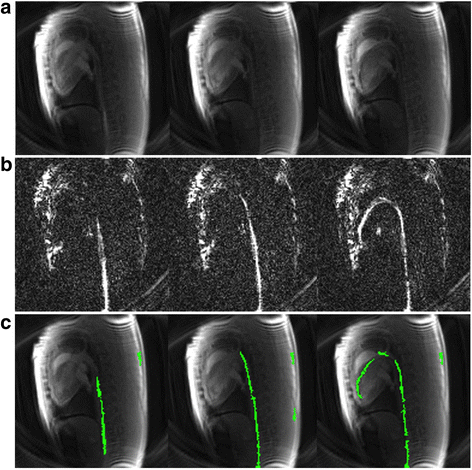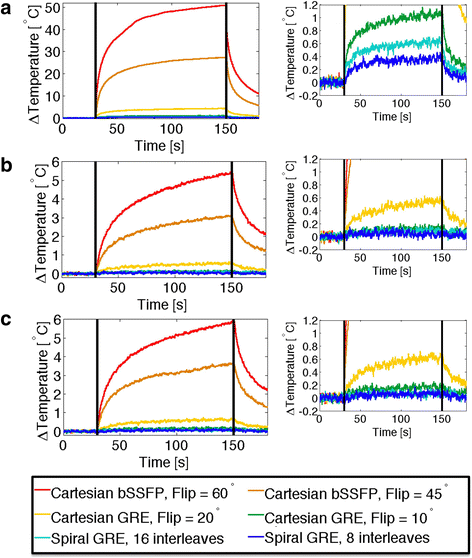Positive contrast spiral imaging for visualization of commercial nitinol guidewires with reduced heating
- PMID: 26695490
- PMCID: PMC4688983
- DOI: 10.1186/s12968-015-0219-9
Positive contrast spiral imaging for visualization of commercial nitinol guidewires with reduced heating
Abstract
Background: CMR-guidance has the potential to improve tissue visualization during cardiovascular catheterization procedures and to reduce ionizing radiation exposure, but a lack of commercially available CMR guidewires limits widespread adoption. Standard metallic guidewires are considered to be unsafe in CMR due to risks of RF-induced heating. Here, we propose the use of RF-efficient gradient echo (GRE) spiral imaging for reduced guidewire heating (low flip angle, long readout), in combination with positive contrast for guidewire visualization.
Methods: A GRE spiral sequence with 8 interleaves was used for imaging. Positive contrast was achieved using through-slice dephasing such that the guidewire appeared bright and the background signal suppressed. Positive contrast images were interleaved with anatomical images, and real-time image processing was used to produce a color overlay of the guidewire on the anatomy. Temperature was measured with a fiber-optic probe attached to the guidewire in an acrylic gel phantom and in vivo.
Results: Left heart catheterization was performed on swine using the real-time color overlay for procedural guidance with a frame rate of 6.25 frames/second. Using our standard Cartesian real-time imaging (flip angle 60°), temperature increases up to 50 °C (phantom) and 4 °C (in vivo) were observed. In comparison, spiral GRE images (8 interleaves, flip angle 10°) generated negligible heating measuring 0.37 °C (phantom) and 0.06 °C (in vivo).
Conclusions: The ability to use commercial metallic guidewires safely during CMR-guided catheterization could potentially expedite clinical translation of these methods.
Figures





References
Publication types
MeSH terms
Substances
Grants and funding
LinkOut - more resources
Full Text Sources
Other Literature Sources

